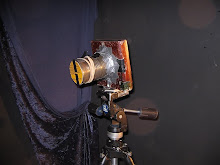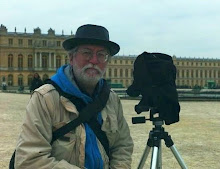OK.
So now I'm not the last photographer on the planet without a blog.
And what's this Mo-Ti's camera all about any way?
Mo-Ti [or Mo Di or Mozi (Mo-tzu) or "Master Mo"] was the first person that we know of who used light passed through a pinhole to form an image. He was a rival of Confucius

and a teacher of universal love [ http://english.eastday.com/e/zx/userobject1ai4047534.html ]
This blog will be dedicated to my practice of what the French call
Stenope, making photographic images without the use of glass lenses, in my case by using home made cameras constructed from aluminum cans and film boxes.

It was been my photographic practice for almost 20 years now, having all but abandoned lensed cameras in favor of the most simple, the most primitive instrument available to make as sophisticated an image as possible. This also coincided with the arrival of digital photography, how it was going to change the way photography would be done forever. Perhaps it was the innate Luddite in me, but my response was 'No By God! Wet photography forever'
[And now, almost a generation into the dominance of digitized imagery- yes, just what is it that you're looking at right now? We are seeing an increasing affection for the 'Noble processes' of light sensitive papers developed in chemical solutions]
To admit, even welcome, this revolution does not change the preference that some of us hold for the craftwork, the individual relationship to single prints made in the traditional wet-process method. So,this blog will present photographic prints originally made on silver gelatin papers and most often toned with sepia or sepia-selenium toners.

My interests encompass the barns and farmsteads of the rural county that I live in in the Hudson Valley of New York to portraits and nudes done in studio and in the landscape. All are for sale - prices upon request - and all are in limited editions. And as noted above all are printed on silver gelatin paper and toned with sepia-selenium to archival standards.
Your comments are welcomed.






















